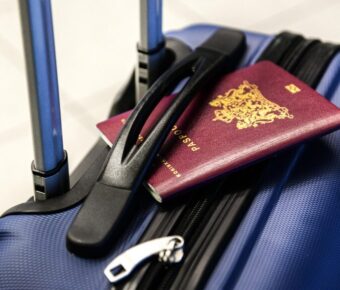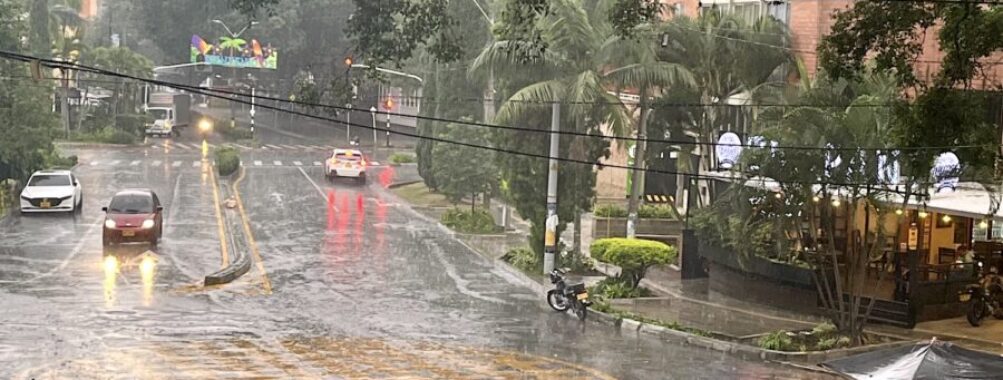
Rainy Season Travel Packing Colombia: 9 Essential Tips for a Dry, Stress-Free Adventure
If you’re heading to Colombia during the rainy season, you might be staring at your suitcase thinking, “What on earth do I actually need?” Honestly, you need the right gear to stay dry and comfortable—packing smart is how you’ll have a blast while everyone else ducks under shop awnings. The weather here? It loves to surprise you. Sudden showers pop up all the time.
I’ve ended up with soggy socks on Bogota streets more than once, and I’d really rather you avoid that fate. Let’s get you ready for Colombia’s rainiest days with a no-nonsense packing guide, so you can do what you want, wherever you’re bound.
Table of Contents
- Key Takeaways
- Understanding the Rainy Season in Colombia
- When Is Rainy Season and Regional Variations
- Typical Weather Patterns and What to Expect
- Traveling During October to November vs. April to May
- Essential Packing List for Rainy Season Travel
- Colombia Packing List Basics
- Clothing and Layering for Variable Weather
- Footwear: Hiking Boots, Walking Shoes, and Sandals
- Bags, Backpacks, and Packing Cubes
- Rain Gear and Protection Essentials
- Choosing the Right Rain Jacket
- Waterproof Accessories and Travel Towels
- Packable Umbrellas and Waterproof Storage
- Health, Safety, and Hygiene Considerations
- Toiletries and Hygiene Products Checklist
- Medications, First Aid Kits, and Health Essentials
- Insect and Mosquito Protection
- Condoms, Lotion, and Personal Care
- Travel Documentation and Safety Items
- Passport, Travel Insurance, and Money Belt
- Travel Itinerary and Important Bookings
- Portable Chargers and Essential Gadgets
- Regional Packing Tips: Colombia’s Diverse Destinations
- Caribbean Coast: Cartagena, Rosario Islands, and Santa Marta
- Andes Mountains and Coffee Region: Medellín & Salento
- Exploring the Amazon and Rainforests
- Packing for Llanos, Minca, and Barranquilla
- Packing for Adventure Activities and Tours
- Best Gear for Hiking and Nature Excursions
- Day Tours, Guided Trips, and Local Events
- Packing for Fewer Crowds and Off-the-Beaten-Path Travel
- Weather-Ready Skincare and Protection
- Sunscreen, Moisturizer, and Lip Care
- Quick-Dry Fabric and Sun-Protective Accessories
- Frequently Asked Questions
- What are essential clothing items to pack for Colombia during the rainy season?
- How should I adjust my packing list for travel to Bogota in the wet months?
- Are there any specific gear recommendations for staying dry while exploring Colombia?
- What type of footwear is best suited for Colombia’s rainy season?
- Can you suggest how to pack light for a three-week journey across Colombia with varying weather conditions?
- What are common packing mistakes to avoid when preparing for a trip to Medellin during the rainy season?
- Book Your Dream Experience
- More Travel Guides
Key Takeaways
- Waterproof clothes and gear are your best friends during rainy season.
- Pack light, but don’t skimp—being prepared keeps you comfortable and healthy.
- Each region’s weather is its own beast, so check your destination’s quirks.
Understanding the Rainy Season in Colombia
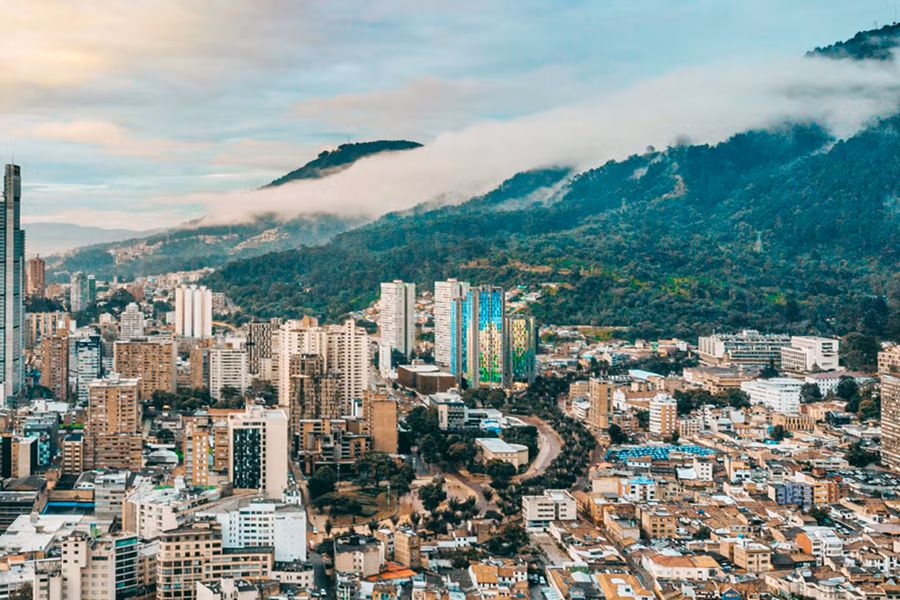
Packing for Colombia’s rainy season can throw you for a loop if you’re not ready. Weather shifts fast, regional climates are all over the place, and the month you visit? That really matters.
When Is Rainy Season and Regional Variations
Colombia’s rainy season comes in two main bursts: April to May, and then October to November. You’ll notice the heaviest rain during these windows, especially if you’re out in the cities or trekking rural trails.
But Colombia’s regions are like different countries. The Andes, the Caribbean coast, the Amazon, and even the big cities—Bogotá, Medellín, Cartagena—they all have their own rain “personality.” Bogotá, perched way up high, gets surprise showers year-round, but they really pick up in the main rainy seasons. The Caribbean? Rain falls in short, steamy bursts, then the sun’s back before you know it. The Pacific coast? Honestly, it’s almost always wet—April through November, you might wonder if it’ll ever stop.
So, your rainy season experience totally depends on where you go.
Typical Weather Patterns and What to Expect
If this is your first South American rainy season, get ready for a different rhythm. Colombia’s rain usually comes in heavy, dramatic bursts—sometimes just an hour or two—then the sun returns. It can feel wild, but most days are still good for exploring.
Temperatures don’t really drop unless you’re in the mountains. Medellín or Cartagena? A rain shower can actually feel pretty nice after the heat. Humidity cranks up, so your clothes might stick, and puddles appear in no time. I’ve had days where I got absolutely drenched, only to dry off an hour later as the sun reappeared.
Waterproof shoes, a light jacket, and a little patience—those are your essentials.
Traveling During October to November vs. April to May
Both rainy seasons deliver plenty of showers, but the vibe changes. October and November? Expect the heaviest downpours, especially in the mountains and on the Pacific side. Flooded roads or delayed flights can happen. I once got stuck in a mountain town when the road to Medellín closed—turned into a fun detour, but wow, I wished I’d packed more socks.
April to May brings shorter rain bursts and a bit more sunshine. Fewer crowds show up during either season, since most travelers chase the dry months (December to March, July to August).
If you don’t mind a little rain and want better prices and emptier attractions, traveling during Colombia’s off-peak wet months can really pay off. Just be ready for some surprise downpours.
Essential Packing List for Rainy Season Travel
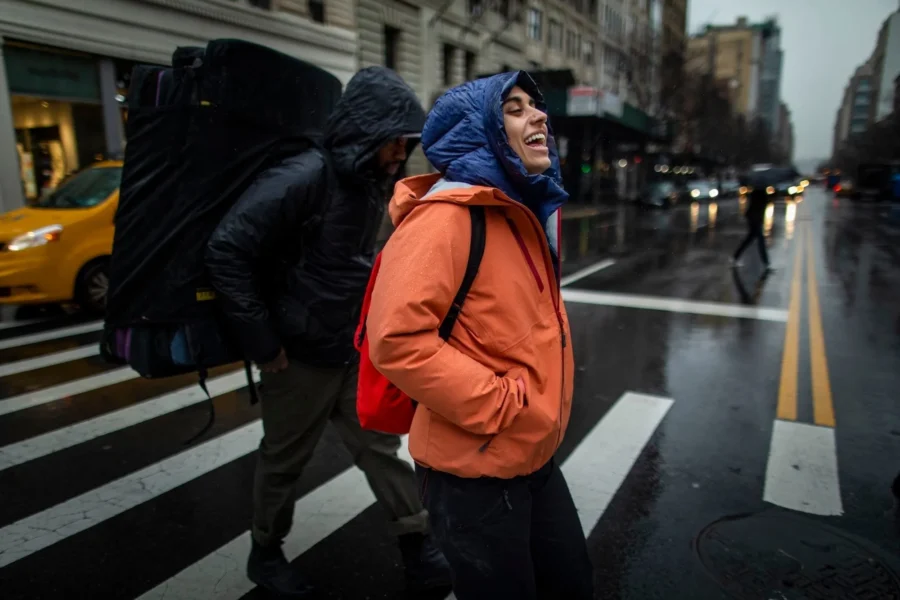
Colombia in the rainy season? It can be fantastic—if you’re prepared. Pack smart and you’ll stay dry, stress less, and actually enjoy those green hills without feeling like a drowned rat.
Colombia Packing List Basics
There’s a sweet spot between being ready for anything and lugging around too much. For Colombia’s rainy months, balance is everything.
You need a lightweight, waterproof jacket—seriously, don’t skip it. Quick-dry shirts are a lifesaver if you get caught in a downpour. Grab a couple pairs of moisture-wicking socks (learn from my mistake: nothing ruins a hike like wet feet).
Toss in a small travel umbrella that fits in your daypack. A microfiber towel dries fast and won’t turn your bag into a soggy mess. Stash some ziplock bags or a dry bag for your electronics and travel docs.
A laundry bag comes in handy for muddy gear—especially if you trek in the Cocora Valley.
Clothing and Layering for Variable Weather
Weather here flips from sunny to misty to soaking wet in minutes, especially near Medellín or in the Coffee Region.
Layer up. I go with a two-shirt system: a breathable base (T-shirt or tank) and a long-sleeve quick-dry for warmth or sun. Fleece or a thin sweater is perfect for cold mountain nights.
Lightweight, water-resistant pants are your friend. Convertible pants (yep, those zip-off ones) are actually practical here. Always keep a spare set of dry clothes in your daypack—you’ll thank yourself when the sky opens up out of nowhere.
An extra hat or buff can keep your head dry or shaded. Easy to forget, but really useful.
Footwear: Hiking Boots, Walking Shoes, and Sandals
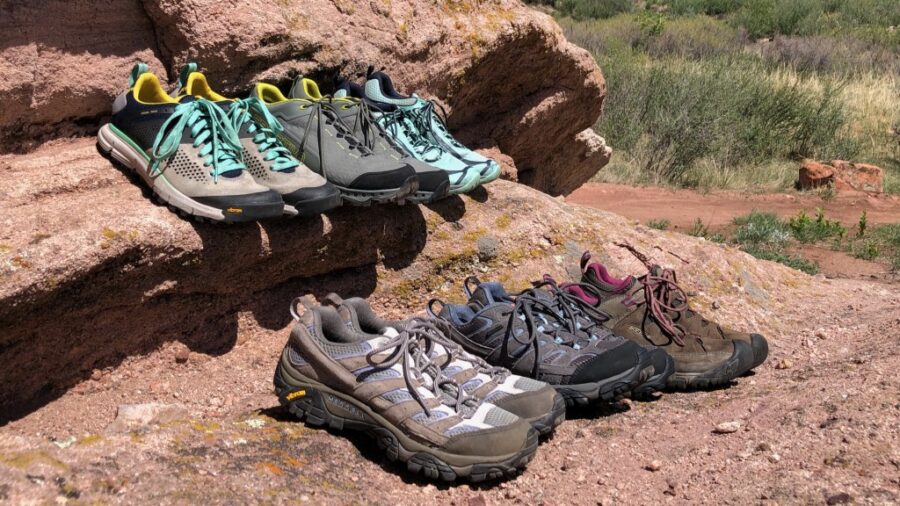
Colombia’s rainy season loves mud. Footwear matters. If you’re hiking—like those muddy Cocora trails—bring waterproof boots.
For city days, comfy walking shoes that dry fast are the way to go. Pack lightweight sandals for hostel showers or lazy afternoons.
Switching shoes mid-day helps if you get caught in the rain. Flip-flops barely take up space, and honestly, dry feet can turn a rough day around.
Bags, Backpacks, and Packing Cubes
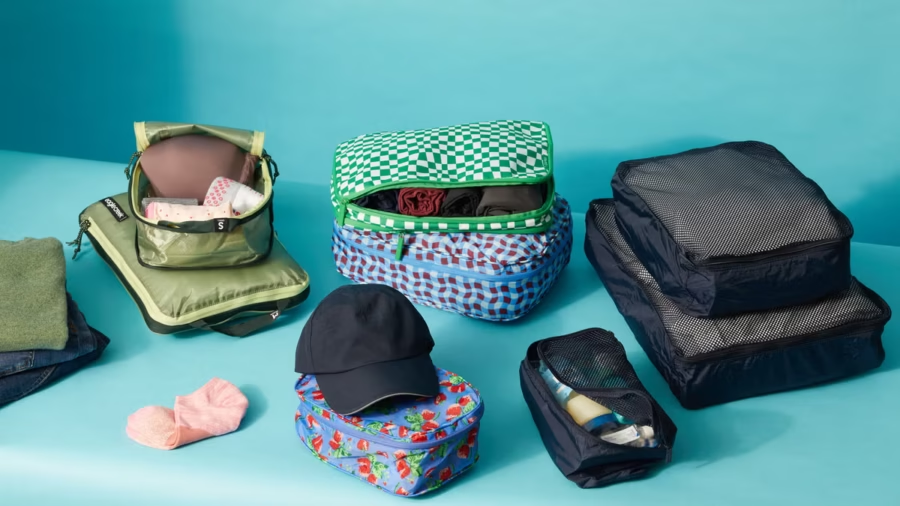
Let’s talk bags. Bring a sturdy backpack with a solid rain cover, whether you’re hopping buses or wandering markets. Comfort is key if you’ll carry it for hours.
Packing cubes are great for separating wet and dry clothes, and make late-night hostel arrivals less chaotic. I picked up an anti-theft daypack for Bogotá’s busy markets—worth it for peace of mind.
Protect your gear with plastic bags or a dry bag inside your main pack. Colombian downpours don’t mess around. If you’re shopping for upgrades, you’ll find plenty of travel gear that’s water-resistant or adventure-ready.
Try to fit your daypack inside your main bag for bus rides—space gets tight, and juggling too much in the rain is never fun.
Rain Gear and Protection Essentials
Staying dry really makes or breaks your Colombia trip in the rainy season. Don’t let a few clouds ruin your plans—just pack smart for all that unpredictable weather.
Choosing the Right Rain Jacket
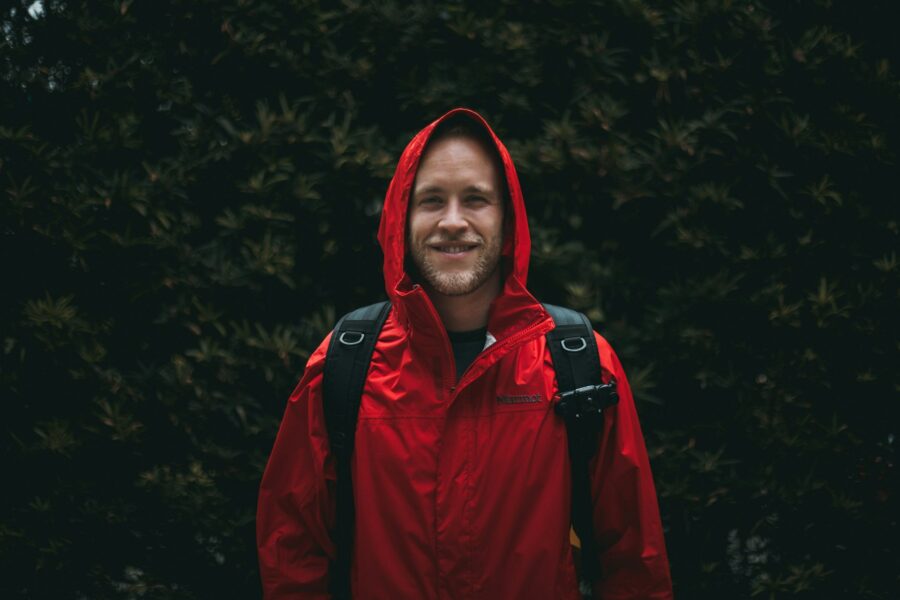
A quality rain jacket is the MVP of your Colombia packing list. Go for truly waterproof (not just “water-resistant”—that won’t cut it). Sealed seams, a hood that actually covers your head, and adjustable cuffs make a world of difference.
I’ve learned that cheap ponchos just don’t hold up. Breathability matters too—Bogotá can feel chilly, but on the coast, you’ll want a jacket that doesn’t turn you into a sweaty mess. Lightweight and packable is best. My favorite shell lives in my backpack’s side pocket, ready for whatever comes.
Brighter colors or patterns help you stand out in a crowd—or just look better in your rainy-day photos.
Waterproof Accessories and Travel Towels
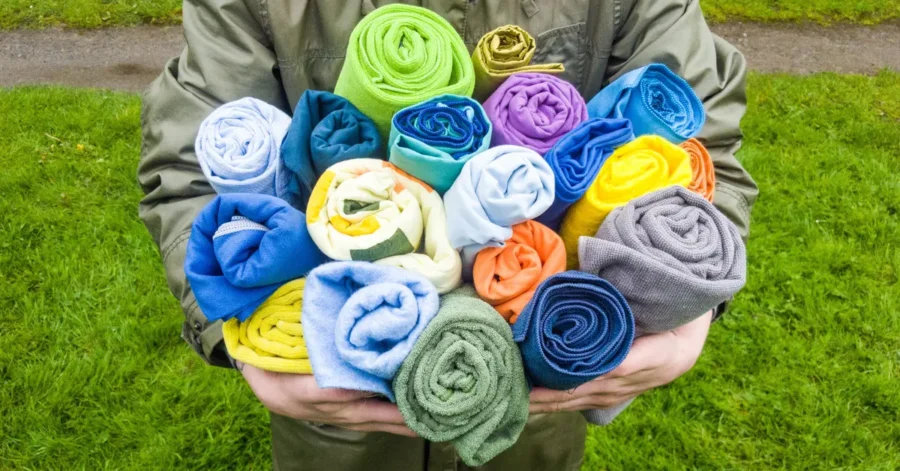
Water finds its way everywhere, so don’t stop with just a jacket. Waterproof or water-resistant shoes are a game-changer. Muddy Salento trails or Medellín’s slick sidewalks are no fun with soaked feet.
A microfiber travel towel is a must. It dries fast, barely takes up space, and you’ll use it to wipe off gear, yourself, or a wet bench. I never bother with hotel towels anymore.
And here’s something I wish more people packed: a filtered water bottle. Not exactly rain gear, but after a drenching walk, I’m always glad to refill safely without hunting for a shop.
Packable Umbrellas and Waterproof Storage
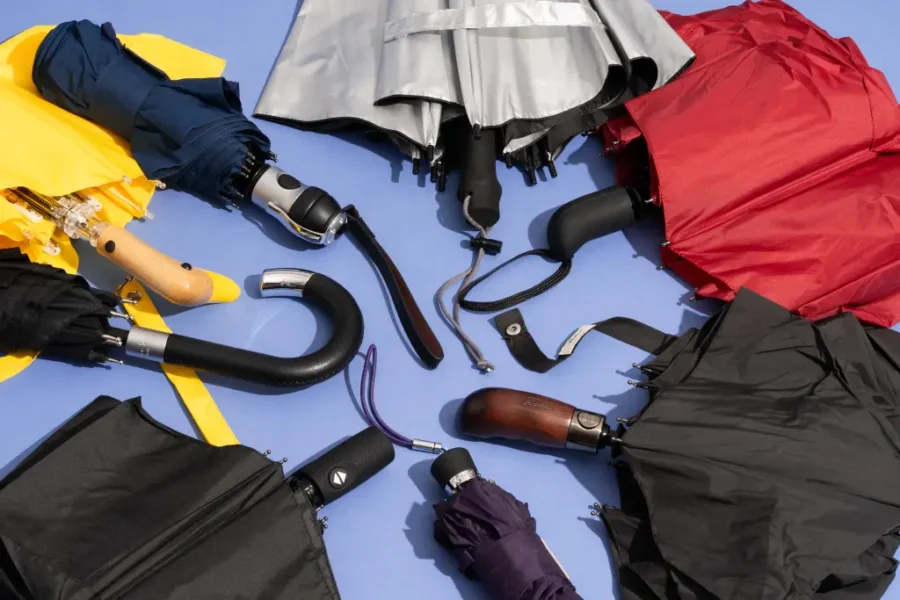
Sometimes, a jacket isn’t enough—especially when the skies really open up. I always carry a small, tough umbrella. Go for one that won’t flip inside out at the first breeze. It makes city wandering so much more bearable.
Don’t forget about your stuff. I use ziplocks or waterproof packing cubes for my electronics, passport, and paper maps. Nothing ruins a travel day like a waterlogged phone.
Here’s a quick cheat-sheet:
| Item | Why Bring It? | My Experience |
|---|---|---|
| Compact umbrella | Heavy showers, hands-free shade | Lifesaver in Bogotá |
| Waterproof bags | Keep gear dry, stay organized | Saved my camera twice |
| Travel towel | Dry off quick, takes no space | Wiped down every bus |
You don’t need every single bit of rain gear, but if you’ve got these basics, you’ll handle whatever Colombia’s weather throws at you.
Health, Safety, and Hygiene Considerations
Staying clean, dodging bugs, and prepping for health issues can make or break your trip. A thoughtful toiletry kit and a few safety items help you breeze through Colombia’s rainy season without nasty surprises.
Toiletries and Hygiene Products Checklist
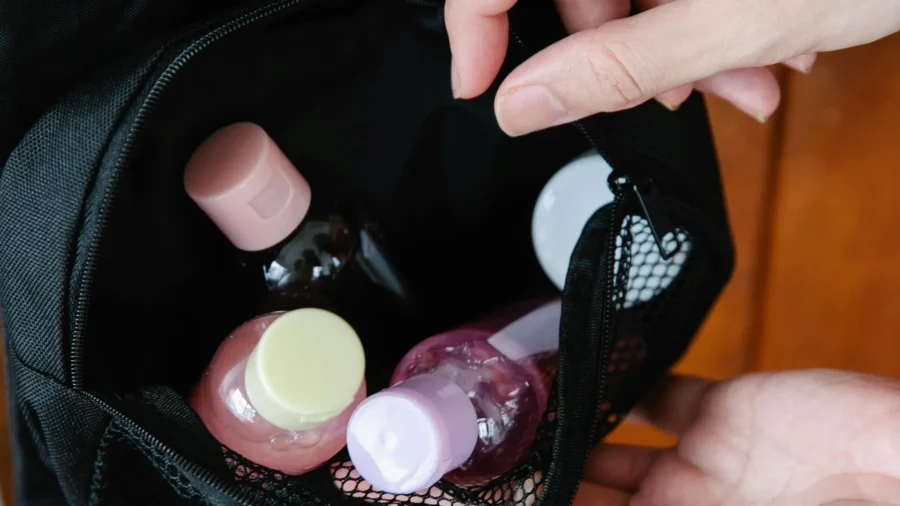
Even if you’re sticking to city hotels, humidity, mud, and sudden showers can mess with your routine. Honestly, a simple, well-planned toiletry bag saves so much hassle. At the bare minimum, pack:
- Travel-size toothbrush & toothpaste
- Sturdy soap container or soap sheets
- Quick-dry face towel and a small pack of tissues
- Hairbrush or small comb (the rain-wind combo can get wild)
- Razor (humidity grows stubble fast)
- Moisturizer and chapstick—rainy air isn’t as gentle as it sounds
- Deodorant—trust me
- Disposable wipes or hand sanitizer
- A few pads/tampons if you use them, just in case
Choose products with strong caps—nothing worse than a leaky lotion bottle soaking your spare clothes.
Medications, First Aid Kits, and Health Essentials
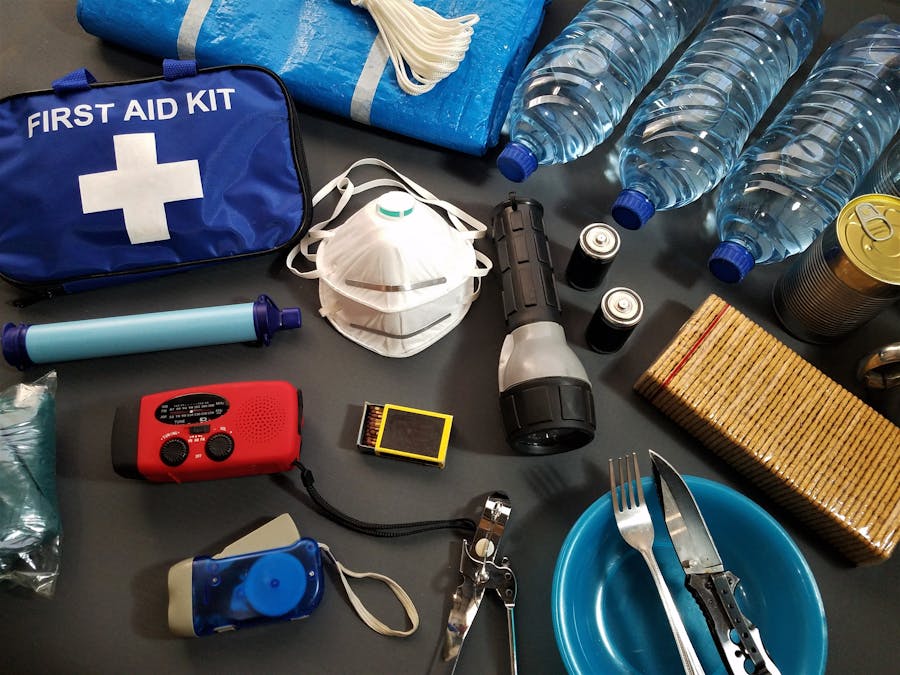
Meds and first aid gear aren’t exactly exciting to pack, but you’ll regret leaving them behind. Colombian pharmacies usually stock the basics, but finding your favorite brands or certain prescriptions can be a gamble.
Bring enough of your own meds to cover the whole trip. If you deal with allergies, asthma, or anything chronic, double-check you’ve got extras—trust me, it’s not worth the risk.
Here’s what I always toss in my kit:
- Imodium or another anti-diarrheal
- Painkillers (I keep a few ibuprofen in a zip bag)
- Plasters (band-aids), some sterile gauze, and a dab of antibacterial ointment
- Tweezers, safety pins, a couple of alcohol wipes
- Insect bite cream—you’ll probably use it more than you expect
- Motion sickness pills if you’re braving mountain buses
- List of your meds with generic names
A filtered water bottle comes in clutch for hikes or when you’re out in rural spots. If you’re heading way off-grid, pack water purification tablets as a backup. I usually carry a small bottle of water for day trips too—heat and humidity sneak up on you fast.
Insect and Mosquito Protection
Mosquitoes in Colombia have a real thing for travelers, especially anywhere lush and damp. Honestly, there’s nothing worse than losing sleep to itchy bites.
Here’s what I rely on:
- 30%–50% DEET or picaridin repellent
- Long sleeves and pants at dusk
- Light, neutral colors (don’t tempt fate with darks—learned that the hard way)
- Mosquito net if you’re jungle-bound or staying in budget hostels
- Slap repellent under your clothes too
- After-bite stick or soothing lotion (aloe always wins for me)
I skipped bug spray once in southern Colombia—never again. It’s a quick ticket to misery.
Condoms, Lotion, and Personal Care
Personal care stuff can get weirdly expensive or just plain scarce in some Colombian towns. Don’t expect your hotel to bail you out with the basics.
- Pack enough condoms—you’ll thank yourself
- Lube isn’t always easy to find, so bring a small bottle if you use it
- Unscented lotion saves your hands after rain and endless handwashing
- If you swear by certain personal care products (beard oil, shaving cream), pack them
- Toss in a spare razor—humidity turns blades dull in no time
Don’t slack on personal hygiene just because it’s pouring. Feeling clean makes all the difference when you’re dodging puddles and living out of a backpack.
Travel Documentation and Safety Items
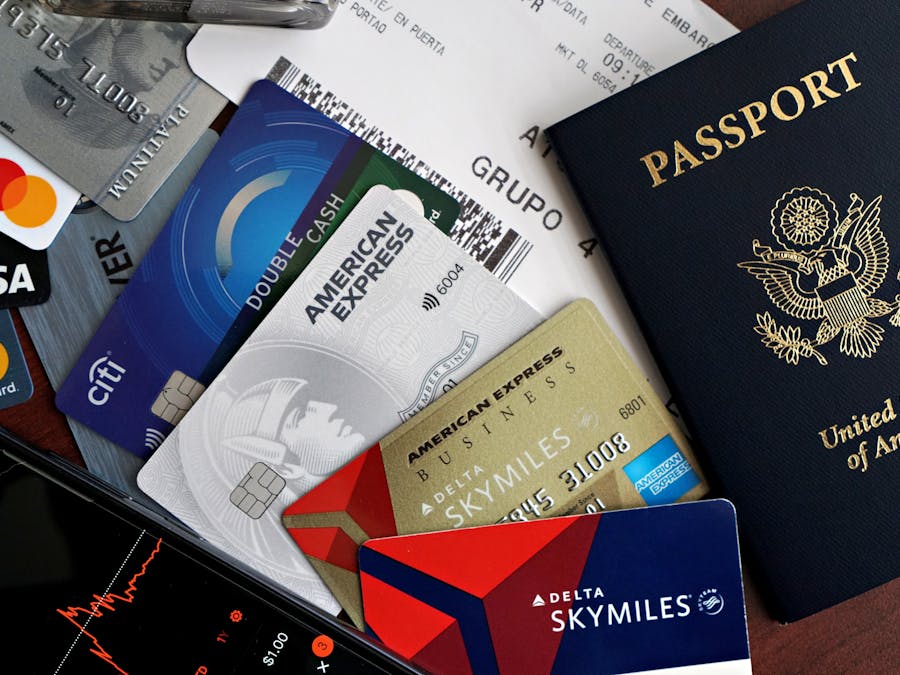
Staying organized with your travel docs and gadgets can save you a world of trouble—especially when the weather turns. Keep your important documents dry, safe, and close at hand. And make sure your tech’s ready for anything.
Passport, Travel Insurance, and Money Belt
Your passport is gold—don’t just toss it in your bag. I use a zippered pouch or waterproof bag, especially during rainy months. Water finds its way in faster than you’d think.
Printed passport copies can save your trip if things go sideways. Travel insurance might not sound thrilling, but it’s a must. I learned that lesson after a Cartagena storm soaked my gear and delayed my flight. Book travel insurance ahead so you can relax, knowing you’ve got a safety net.
I used to roll my eyes at money belts, but a pickpocket on Medellín’s metro changed my mind fast. Use a slim belt or hidden pouch for cash, cards, and backup ID. You’ll be glad when you’re not fishing in a soggy bag at a crowded terminal.
Travel Itinerary and Important Bookings
Print your travel itinerary and bookings—don’t just rely on your phone. I print tickets and hotel confirmations, just in case. When it’s pouring, you won’t want to mess with your phone on a busy street or risk a dead battery.
Write down contacts for hotels, airlines, and maybe your embassy. I once lost WiFi right after landing in Bogotá and had no clue where to go. Now I keep emergency numbers (hospitals, police) on my phone and a notepad, stashed in a waterproof bag. It’s saved me more than once when my phone died or went missing.
Portable Chargers and Essential Gadgets

You’ll burn through your phone battery—photos, maps, rain delays, you name it. Pack a portable charger with at least two USB ports. Mine’s saved me from getting lost and missing out on epic photo ops.
Don’t forget a universal travel adapter—Colombian plugs might not match yours. Earbuds or noise-cancelling headphones help when rain’s hammering the roof. Toss in a small flashlight or headlamp—blackouts hit, and sometimes you’re digging through your bag in a dark hostel.
Zip-lock or waterproof pouches for all your tech? Absolutely worth it. A little prep keeps your gear dry and your plans on track.
Regional Packing Tips: Colombia’s Diverse Destinations
Packing for Colombia’s rainy season isn’t one-size-fits-all. Each region has its own weather and quirks, so what works in Cartagena could leave you freezing in the Andes.
Caribbean Coast: Cartagena, Rosario Islands, and Santa Marta
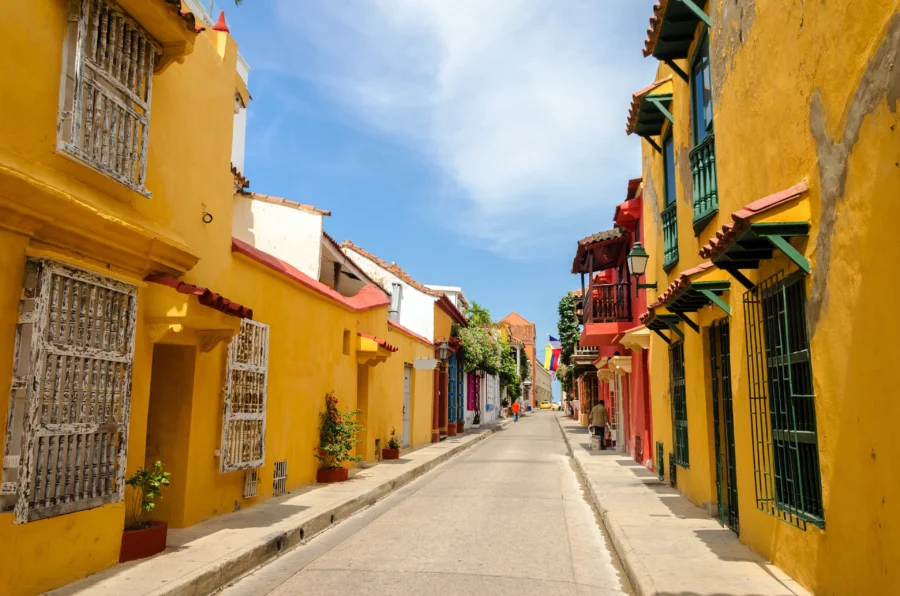
Prioritize clothes that handle heat and sudden rain. Quick-dry shorts and shirts are lifesavers. I’ve spent more time than I’d like waiting out storms in Santa Marta cafes.
- Pack a compact umbrella—don’t skip it
- Sandals or waterproof shoes (Cartagena’s streets flood fast)
- Light scarf or shawl for surprise sun
- Swimsuit—rain never cancels Caribbean swims
- Something a little dressy for dinners with a view
Mosquito repellent is a must. Rain brings them out in force, especially at sunset.
Andes Mountains and Coffee Region: Medellín & Salento
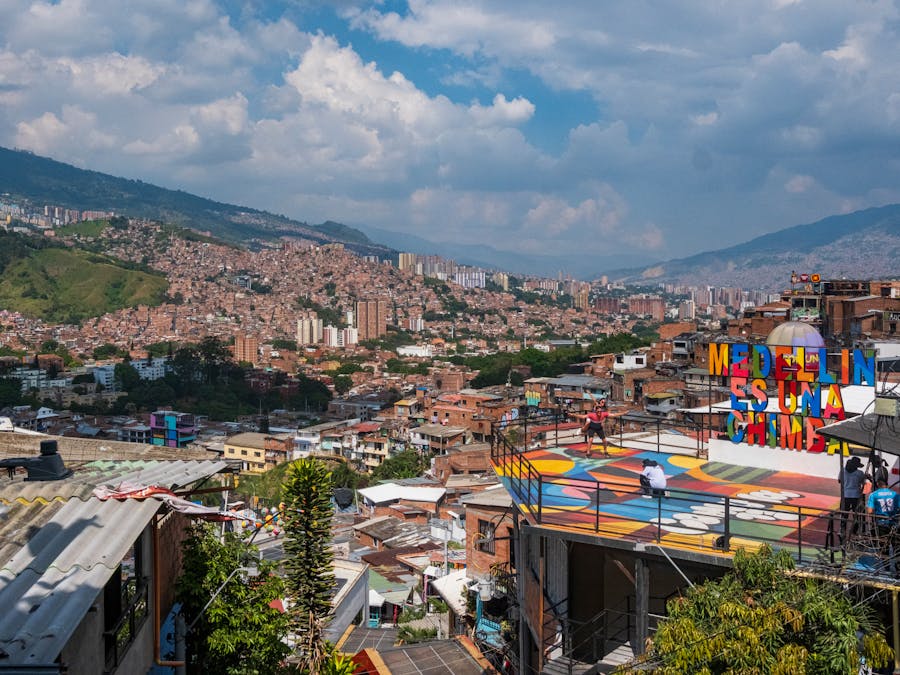
The Andes shift from sun to mist to downpour in minutes, especially in Salento or Medellín’s hills. Layers are your friend. Light long sleeves that dry fast? Gold. I used to underestimate the chill—don’t make that mistake.
Here’s what helps:
- Light rain jacket (something you’ll actually wear)
- Fleece or sweater for chilly nights (it drops below 10°C, even in Medellín)
- Water-resistant shoes or hiking boots (mud is relentless)
- Compact umbrella or poncho for sneaky drizzle
- Hat and sunscreen—altitude sun burns faster than you’d think
If you’re hiking or doing day trips, keep a dry bag for your passport and gadgets. Split your stuff into small daypacks—locals love quick trips out here.
Exploring the Amazon and Rainforests
Heading to the Amazon? Everything gets damp, and you’re deep in the wild. Bug and mud protection matter way more than style. I hand-wash clothes at night and cross my fingers they dry—spoiler: they rarely do.
You’ll want:
| Item | Why Pack It? |
|---|---|
| Lightweight long pants | Mosquitoes and creepy crawlies |
| Quick-dry shirts | Humidity is always high |
| Waterproof boots | Trails, boats, surprise puddles |
| Poncho or full rain suit | Keeps you dry in downpours |
| Reusable water bottle | Stay hydrated—heat sneaks up on you |
| Strong insect repellent | Mosquitoes in waves after each rain |
Toss in anti-itch cream and extra socks. Wet feet get old fast, and you’ll thank yourself after a muddy trek.
Packing for Llanos, Minca, and Barranquilla
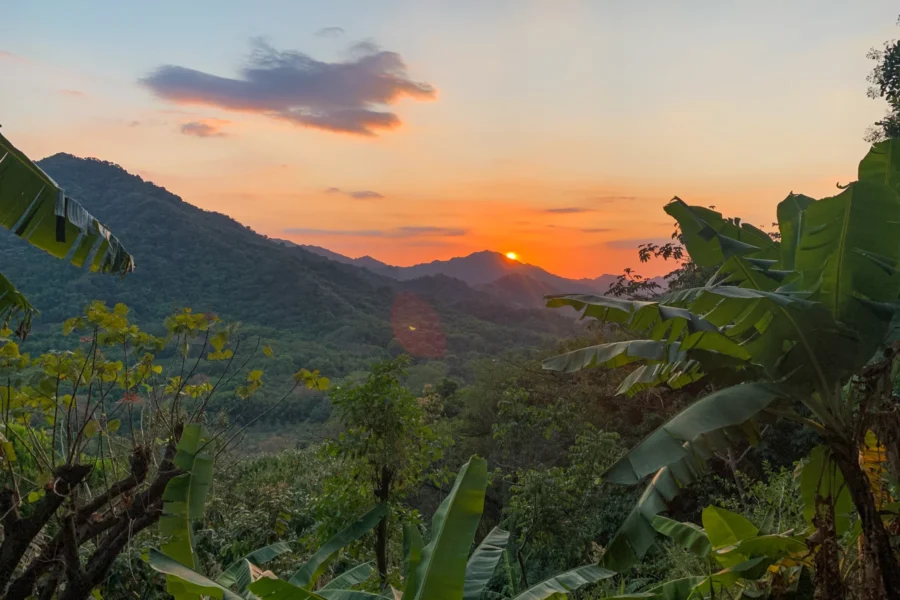
If you’re off to the Llanos or Minca, expect wide-open spaces, post-storm mud, and maybe a festival in Barranquilla. Pack for chilly mornings, sudden storms, and heat—sometimes all in one day.
- Breathable tees and light long sleeves (sun and bugs both hassle you)
- Flip-flops for showers, sturdy shoes for hikes or muddy roads
- Rain cover for your backpack (shelter is rare when storms hit)
- Hat or bandana for sun and wild hair
- If you’re in Barranquilla for Carnival, bring a colorful shirt or dress—you’ll want to join the party
Minca gets chilly at night and storms can be wild—pack something warm. Photographers, bring a dry bag: the views are worth keeping your camera handy, not buried in fear of rain.
Packing for Adventure Activities and Tours
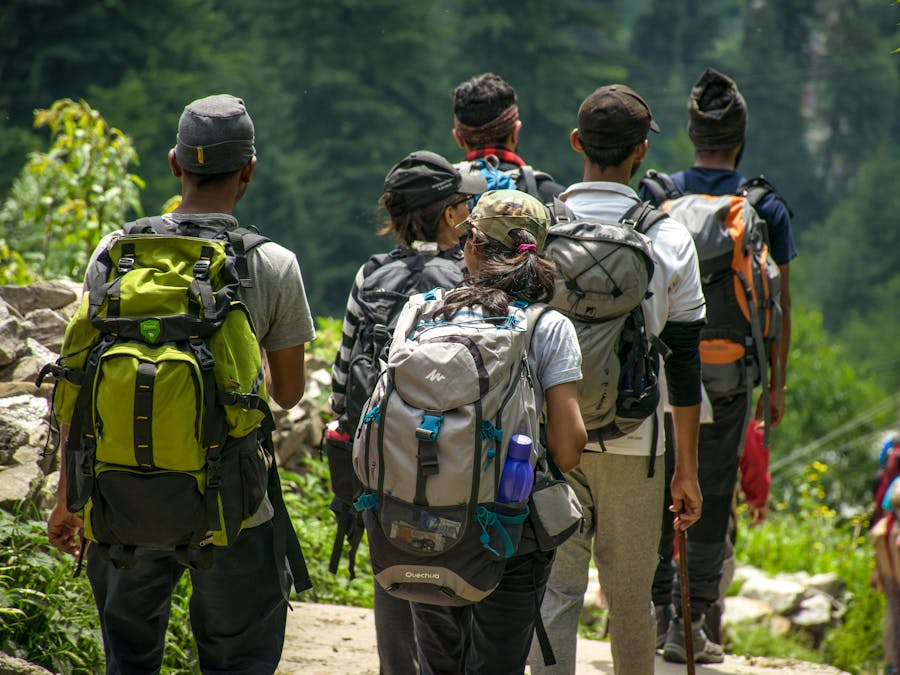
Colombia’s rainy season doesn’t mean you have to skip adventure. With a bit of smart packing, you’ll stay dry, comfy, and ready for hikes or day tours to places most travelers miss.
Best Gear for Hiking and Nature Excursions
For hiking, don’t mess around—real waterproof gear is worth it. A rain jacket that actually keeps water out is a game changer. Quick-dry pants are essential. I once wore jeans in a cloud forest—never again.
Waterproof hiking boots save your feet from misery. Toss in spare socks and a compact poncho. If you’re headed to Valle de Cocora or the Amazon, lightweight gaiters keep mud and critters out of your boots. Always pack bug spray and a hat with a brim—don’t let yourself become trail food.
I keep my electronics in a zip-sealed pouch or dry bag. If trails get slick, a trekking pole helps, but it’s not a dealbreaker.
Day Tours, Guided Trips, and Local Events
Guided day tours open up hidden corners, even if weather changes your plans. For short tours, a tiny umbrella and foldable raincoat fit easily in your bag. I like to stash a change of clothes in a mesh bag for those “soaked to the skin” moments.
Comfy shoes are a must—cobblestones and wet sidewalks are brutal on flimsy flats. Lightweight layers help if you duck into a chilly church or sunny plaza.
For festivals or local events, aim for casual but sharp. Colombians dress well, rain or shine. A bright scarf or quick-dry dress keeps you looking good and feeling practical.
Packing for Fewer Crowds and Off-the-Beaten-Path Travel
So you’re heading somewhere off-grid, chasing quiet trails and avoiding the usual tourist stampede? Pack light, but don’t get careless about safety. For mellow regions, I always stick with neutral colors—flashy stuff just draws attention you don’t want. I swear by a small, sturdy backpack that locks up tight, especially for those sketchy bus rides or rustic hostels.
If you’re booking unique tours or staying out in the countryside, toss in a flashlight or headlamp. Power outages can hit anywhere outside Bogotá or Medellín, especially when storms roll in.
Wet wipes and a travel towel? Absolute lifesavers after muddy treks or those long, bumpy bus journeys.
You’ll never regret packing a soft-shell jacket. They’re way more breathable than those cheap plastic ponchos—trust me, you’ll stay dry without feeling like you’re sweating inside a garbage bag.
A water filter bottle is a game-changer too. You won’t waste time or pesos hunting for bottled water in tiny towns.
Weather-Ready Skincare and Protection
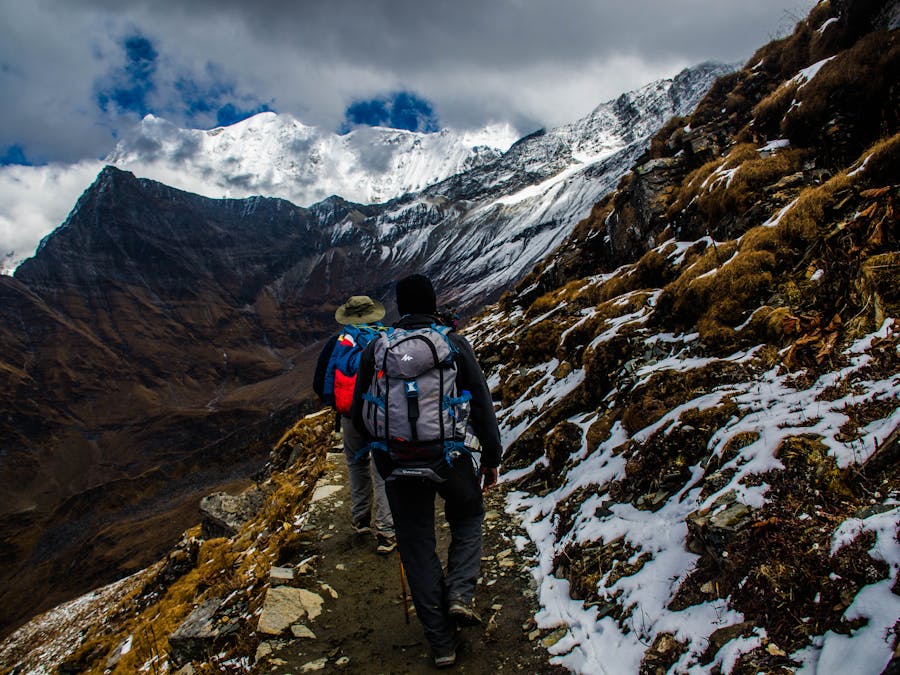
Colombia’s rainy season is unpredictable—one minute it’s pouring, next it’s blazing sun. Your skin goes through a lot, so don’t ignore it. Simple tricks can keep you looking and feeling good, even when the weather can’t make up its mind.
Sunscreen, Moisturizer, and Lip Care
Sunburn in Colombia? It’s no joke, even in the rain. Clouds don’t block those UV rays, so a high SPF sunscreen is a must. I go for SPF 50+, but if you burn easily, push that number higher. Don’t forget awkward spots: tops of your ears, back of your neck, and—seriously—the tip of your nose.
Moisturizer’s a multitasker during the rainy season. After a downpour, it stops your skin from drying out. At night in high-altitude cities like Bogotá, the air can leave your face tight and flaky. A tiny travel tube fits right in your daypack.
Chapstick, though—don’t leave it behind. I learned that lesson fast when my lips cracked by day two. Grab a hydrating lip balm with SPF. It’s tiny, but makes a world of difference. Your selfies (and your lips) will thank you.
Quick-Dry Fabric and Sun-Protective Accessories
Smart packing really pays off here. Ditch the heavy cotton and bring quick-dry fabrics. They wick sweat, dry lightning fast after a shower, and help you avoid that gross, soggy feeling.
Sun-protective accessories are underrated. A wide-brim hat keeps both sun and rain off your face. I’ve worn mine all day in Medellín, and honestly, it’s so much better than sweating under a hood. Sunglasses aren’t just beach gear—after rain, that equatorial sun is blinding.
If hats aren’t your thing, a lightweight scarf or buff is surprisingly handy. It shields your neck, keeps wind at bay, and you can pull it over your mouth if you hit a dusty road. My go-to move? Pick items with built-in UPF when you can. It’s just good peace of mind.
Frequently Asked Questions
Packing for Colombia’s rainy months isn’t as simple as tossing a rain jacket in your bag. If you want to bounce between mountain cities and the tropics, you’ll need some clever tricks.
What are essential clothing items to pack for Colombia during the rainy season?
Quick-drying clothes are the real MVPs here. Lightweight t-shirts, fast-drying pants, and a couple of long sleeves should cover most situations.
A packable waterproof jacket is key—the lighter, the better. I usually bring two pairs of jeans, but I only wear them if it’s chilly. In humid places, synthetic fabrics or athleisure leggings beat jeans every time.
How should I adjust my packing list for travel to Bogota in the wet months?
Bogota sits high in the mountains, so it gets pretty chilly—definitely sweater weather. Rain feels colder up there too.
Layering is your best friend. Bring a decent sweater or thin fleece, plus that waterproof jacket. A small umbrella won’t hurt, but make sure it fits in your bag—nobody wants to fight with a giant umbrella in city winds.
Are there any specific gear recommendations for staying dry while exploring Colombia?
A compact, sturdy umbrella has bailed me out more times than I care to admit. Ponchos are solid too—you want something fast to throw on when the skies open up.
Water-resistant packing cubes are clutch. They keep your electronics and papers safe from sudden downpours.
What type of footwear is best suited for Colombia’s rainy season?
Leave your nice shoes at home. Waterproof hiking shoes or sandals that can get wet and dry quickly are the way to go.
Sneakers work if you have a backup, but they soak up water fast. Some travelers swear by rubber boots in rural areas, but honestly, I stick with hiking shoes unless I’m going way off-grid.
Can you suggest how to pack light for a three-week journey across Colombia with varying weather conditions?
Packing cubes changed my life. Roll your clothes to save space, and bring layers you can mix and match for both warm and cool places.
Stick with the basics: four shirts, two pants, one pair of shorts, and enough socks and underwear for a week. Laundry is easy to find, so don’t overpack. And hey, don’t skip the swimsuit—you’ll want it, even if you think you won’t.
What are common packing mistakes to avoid when preparing for a trip to Medellin during the rainy season?
People often pack way too many fancy clothes. Medellin’s vibe is honestly pretty laid-back—even when you’re out at night, you’ll notice locals don’t dress to the nines.
A lot of travelers skip proper rain gear, which is a rookie move. Expect at least one good soaking per day during the rainy season.
You might think heavy boots are a good idea, but trust me, they’re just going to weigh you down. Prioritize comfort and practicality over style; your feet will thank you.
Oh, and don’t forget extra socks. I can’t tell you how many times I’ve wished I had a dry pair after an unexpected downpour.

